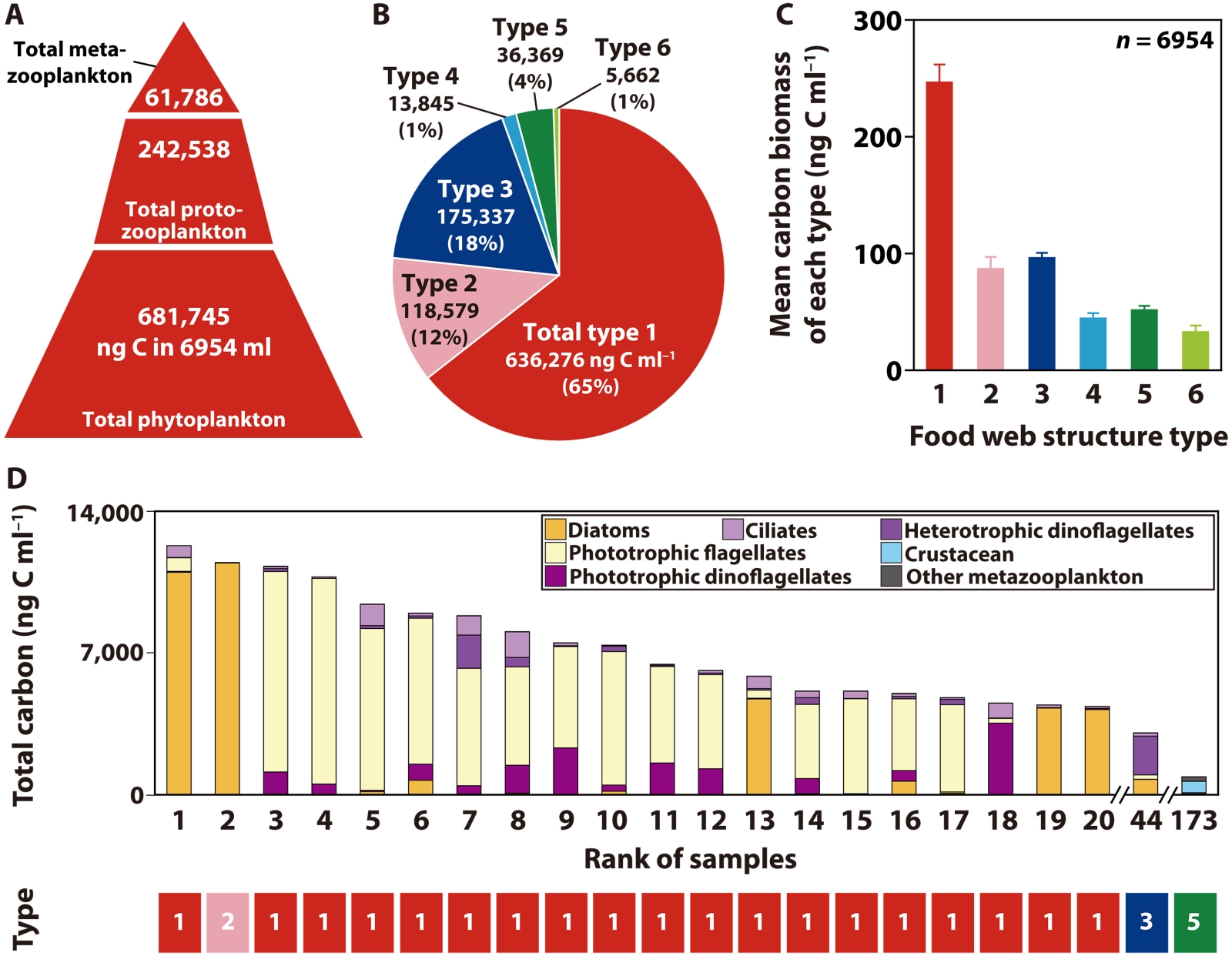December 15, 2023 | ScienceAdvances |
Introduction: Before the industrial revolution, Earth's atmosphere had 280 parts per million of carbon dioxide (CO2), but human activities have added 300 billion tonnes of carbon, influencing the ocean's absorption of CO2 and impacting global warming. Marine organisms play a crucial role in this process, with phytoplankton, unicellular protozooplankton, and multicellular metazooplankton contributing to the carbon biomass. Researchers from Seoul National University, Gyeongsang National University, and Kunsan National University in South Korea investigate the dynamics of carbon biomass in the global ocean's plankton communities from 1990 to 2021.
Key findings: The research reveals that phytoplankton-dominated bottom-heavy pyramids in food web structures retain higher carbon biomass in plankton communities compared to protozooplankton-dominated middle-heavy diamonds or metazooplankton-dominated top-heavy inverted pyramids. While bottom-heavy pyramids are predominant, predation by protozooplankton or the vertical migration of metazooplankton temporarily alters the structure, shifting to middle-heavy diamonds or top-heavy inverted pyramids before returning to bottom-heavy pyramids.
This finding has significant implications for understanding carbon retention in the global ocean's plankton communities, highlighting the intricate interactions shaping these ecosystems and their response to external factors.

Fig. | Total carbon biomass of each plankton group and the dominant groups in the 20 highest total carbon biomass samples. (A to C) Carbon biomasses (in ng C in 6,954 ml) of total phytoplankton, protozooplankton, and metazooplankton (A), total carbon biomass (in ng C ml−1) of each type (B), and mean carbon biomass (in ng C ml−1) of each type (C) in all the individual samples or locations in the phytoplankton-based food webs. Symbols in (C) represent treatment means ± 1 SE. (D) Dominant groups and types of samples or locations retaining the top 20 highest carbon biomasses of a total of three plankton groups. In addition, the samples retaining the highest carbon biomasses among types 3 (blue) and 5 (green) ranked in the 44th and 173rd places, respectively.





